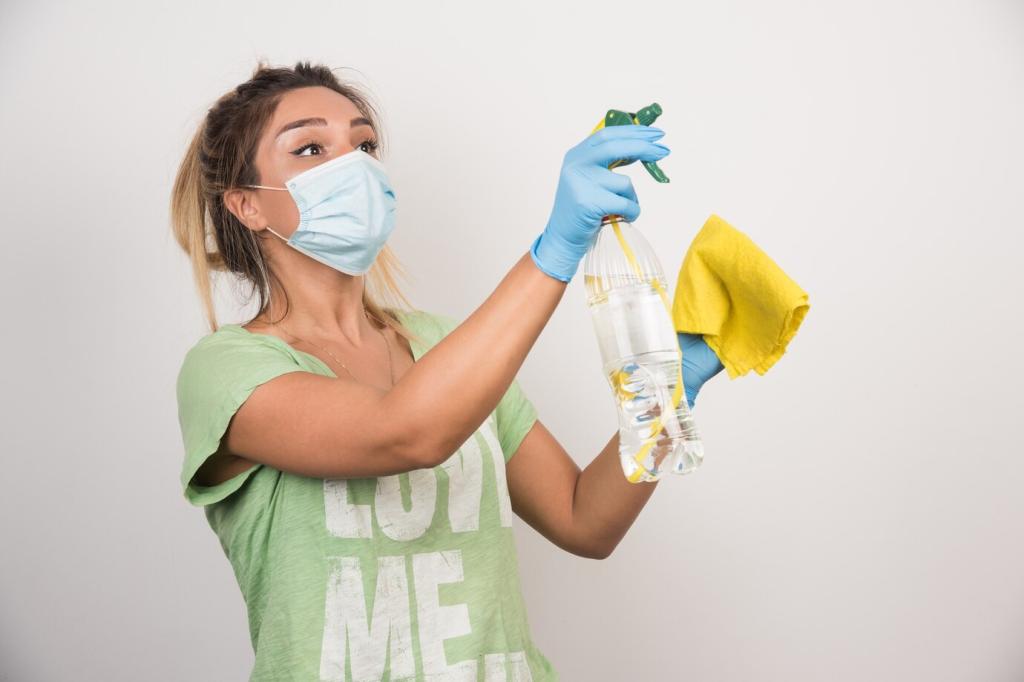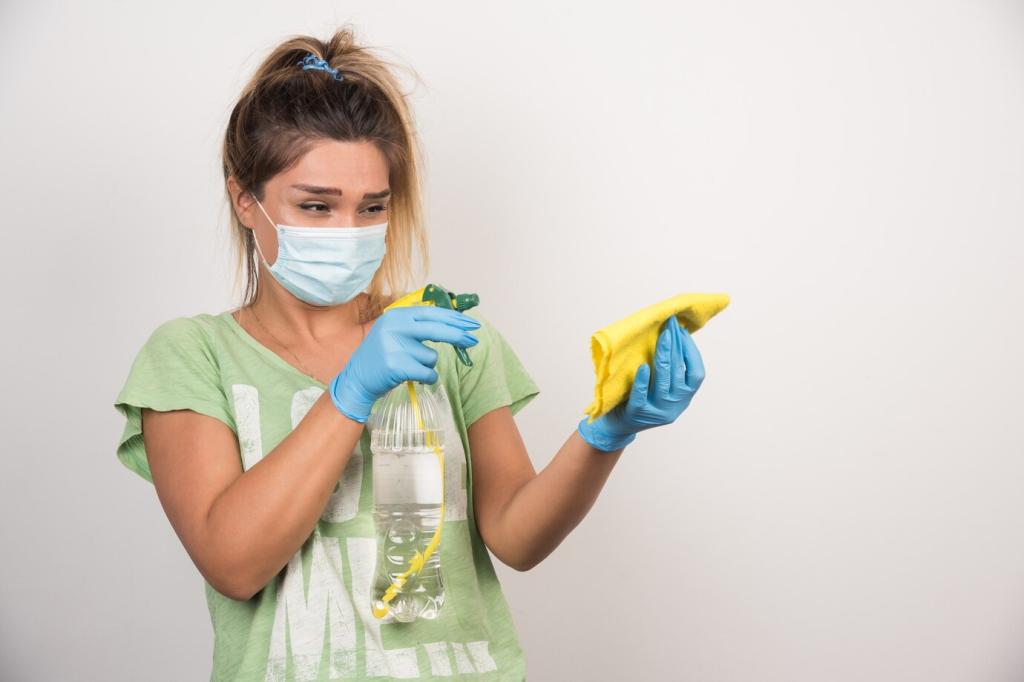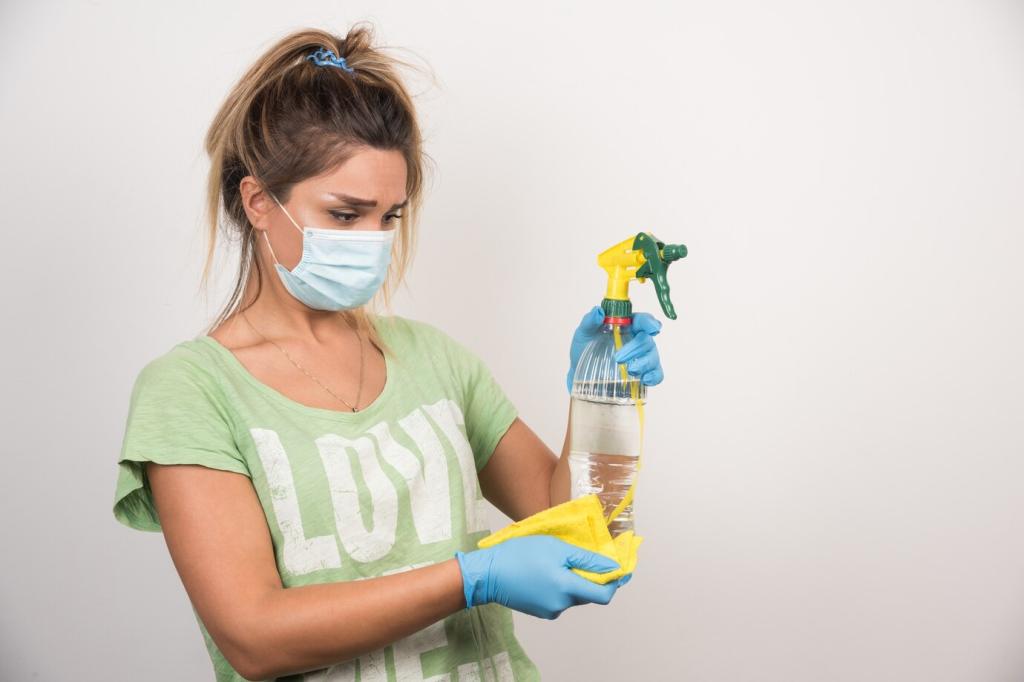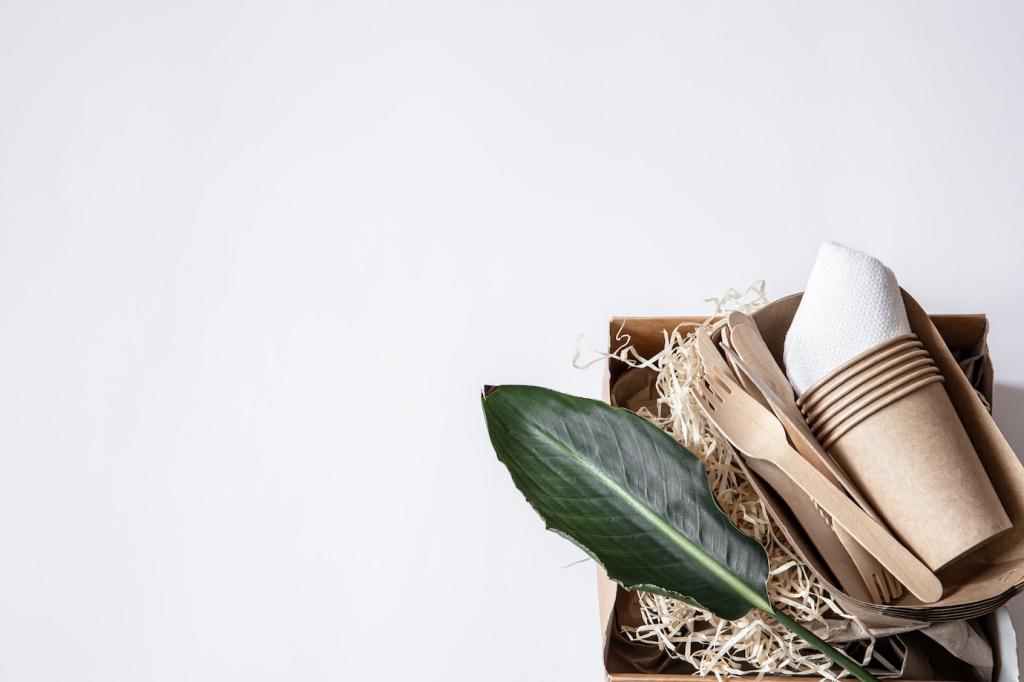DIY Plant-Based Furniture Cleaning Sprays (Safe, Simple, Effective)
Combine 480 ml distilled water, 10 ml decyl glucoside, 5 ml plant ethanol, and two drops lavender. Shake gently. Mist cloth, then wipe surfaces. Patch test first, especially on vintage finishes, and buff dry to prevent water marks or streaks.
DIY Plant-Based Furniture Cleaning Sprays (Safe, Simple, Effective)
Blend 470 ml distilled water, 10 ml decyl glucoside, 10 ml jojoba, and one drop lemon. Shake before use. Apply to cloth, not wood. Buff immediately for a soft sheen. Avoid unsealed or wax-only finishes and always test corners.
DIY Plant-Based Furniture Cleaning Sprays (Safe, Simple, Effective)
Mix 380 ml distilled water, 120 ml plant ethanol, and 5 ml unscented hydrosol. Skip essential oils if pets are present. Lightly mist, allow airflow, and blot if overspray occurs. Always test hidden fabric panels for colorfastness to avoid rings.
DIY Plant-Based Furniture Cleaning Sprays (Safe, Simple, Effective)
Lorem ipsum dolor sit amet, consectetur adipiscing elit. Ut elit tellus, luctus nec ullamcorper mattis, pulvinar dapibus leo.








